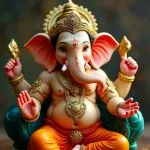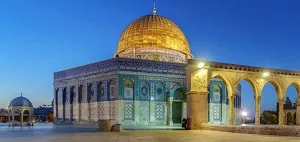
Sree Anantha Padmanabhaswamy Temple is a prominent Hindu temple in Thiruvananthapuram, Kerala. It is devoted to Lord Anantha, Lord Vishnu's avatar. Thiruvananthapuram literally means "Lord Anantha's Land."
The 100-foot-tall gopuram (ornate entrance gate) is just one example of the temple's fusion of Keralite and Tamil temple design. The primary god, represented by an 18-foot idol, is seated in the Ananthasayanam posture on Adi Shesha inside the main temple. Thiruvananthapuram translates to 'City of Anantha'. Sheshnag (Anantha) is the Divine serpent who carries the universe's weight. Padmanabhaswamy Temple is one of Lord Vishnu's 108 Divya Desams. A fantastic and overwhelming treasure trove is claimed to be guarded by Sheshnag within its multiple vaults. This temple is one of the richest in the world.

It is believed that in the Dvapara Yuga, Parasurama cleaned and worshiped the Sree Padmanabhaswamy idol. The current Sree Padmanabhaswamy Temple was built after extensive renovations commissioned by the famous Travancore ruler Marthanda Varma. Marthanda Varma is credited with bringing two new festivals to the temple: Murajapam and Bhadra Deepam. In 1936, under the reign of Chithira Thirunal Rama Varma, another significant event occurred at the Sree Padmanabhaswamy Temple. His plan to welcome people of different Hindu backgrounds into temples was laid forth in the Kshethra Praveshan Vilambram. The intricate stone and bronze work at Sree Padmanabhaswamy Temple in Trivandrum sets it apart.

The walls of the temples are covered in stunning murals and paintings. Images of Narasimha Swamy (the half-lion, half-human incarnation of Vishnu), Ganapati, Gaja Lakshmi, and the reclining form of Lord Vishnu are all life size. The temple's dhwaja stamba (flag post) has gilded copper sheets and stands at roughly 80 feet tall. Padmanabha lounges in the Garbhagriha on the snake Anantha or Adi Sesha. The serpent's five inward-pointing hoods represent deep thought. The god holds a Shiva lingam in his right hand. Vishnu is accompanied by his consorts, Sridevi-Lakshmi, the Goddess of Prosperity, and Bhudevi, the Goddess of the Earth. The lotus upon which Brahma rides is said to arise from the god's navel. There are 12,008 salagrama used to create the god.

One must go up to the mandapam for darshan and worship. Through the first door, one can see the reclining Padmanabha with the Siva Linga under his hand; through the second, one can see Sridevi and Bhrigu Muni in Katusarkara with Brahma seated on a lotus that rises from the deity's navel (hence the name "Padmanabha"); and through the third, one can see the deity's feet with Bhudevi and Markandeya Muni in Katus Other deities represented in the Sanctum are Surya, Chandra, the Saptarshi, Madhu, and Kaitabha, as well as two goddesses each carrying a Chamaram, Garuda, Narada, Tumburu, and the divine forms of Vishnu's six weapons.

After that, we started calling them "A," "B," "C," "D," "E," and "F" vaults. Five of the six were broken into, and inside were treasures including gold coins, statues, jewelry, rare stones, crowns, and even thrones. Gold mace, gold coconut shells, and other goods can be found in vault C, along with gold jewelry fit for a god. Daily pooja supplies, including three statues of Lord Padmanabha, are kept in the sixth vault. The vault was allegedly full of cobras when some people tried to open it a few decades ago. According to urban legend, the door is locked with potent Naga Paasam mantras chanted by wise men. And it is often believed that only a highly accomplished saint can chant the Garuda mantra to banish the Naga Paasam.

Vault B is kept hidden behind one of the temple's many hidden doors. The priests and scholars believe that the Ugra Narsimha avatar of Lord Vishnu guards this vault and provides shelter to the mythical beings who live here. The vault door features a serpent symbol, another warning sign.







